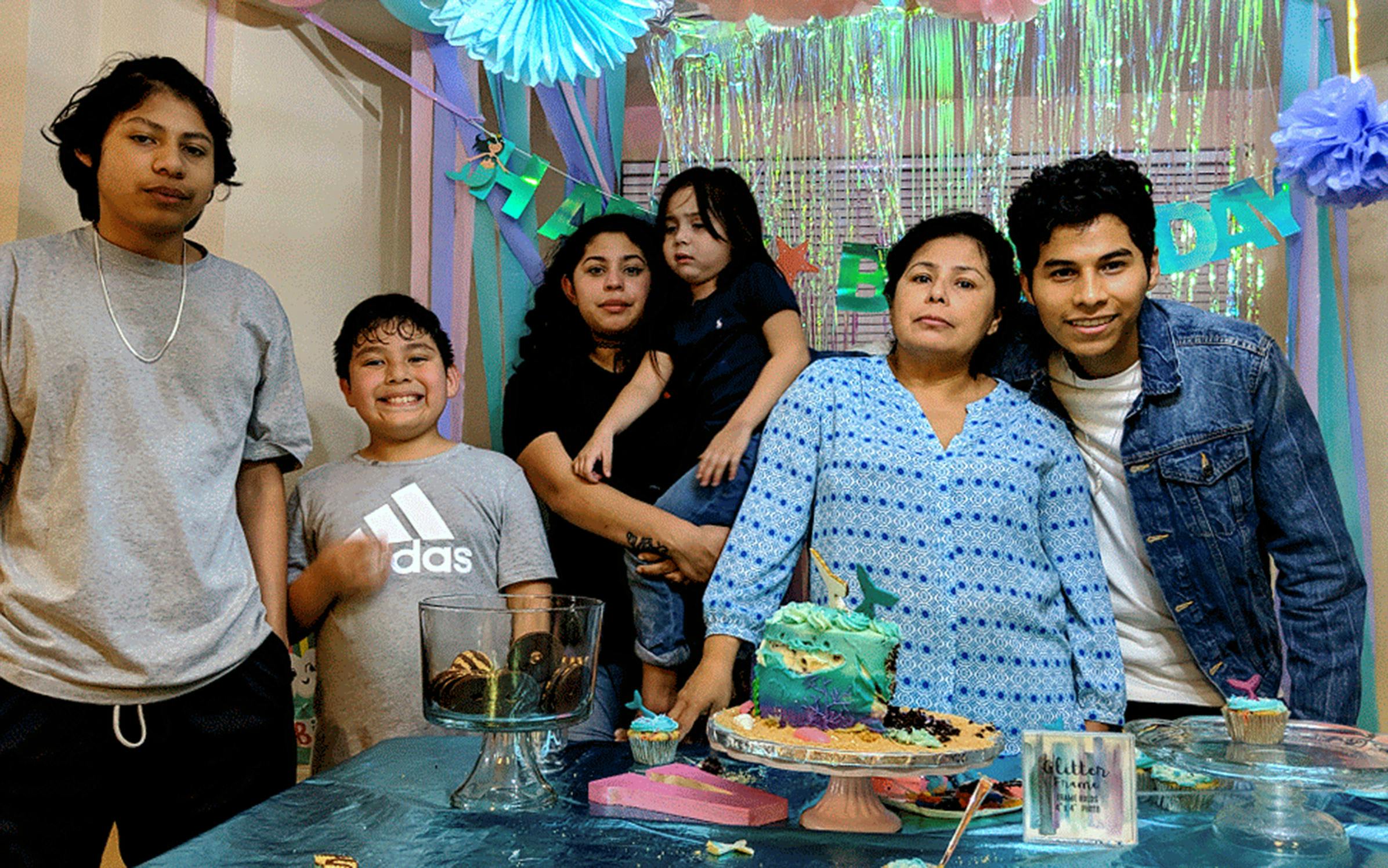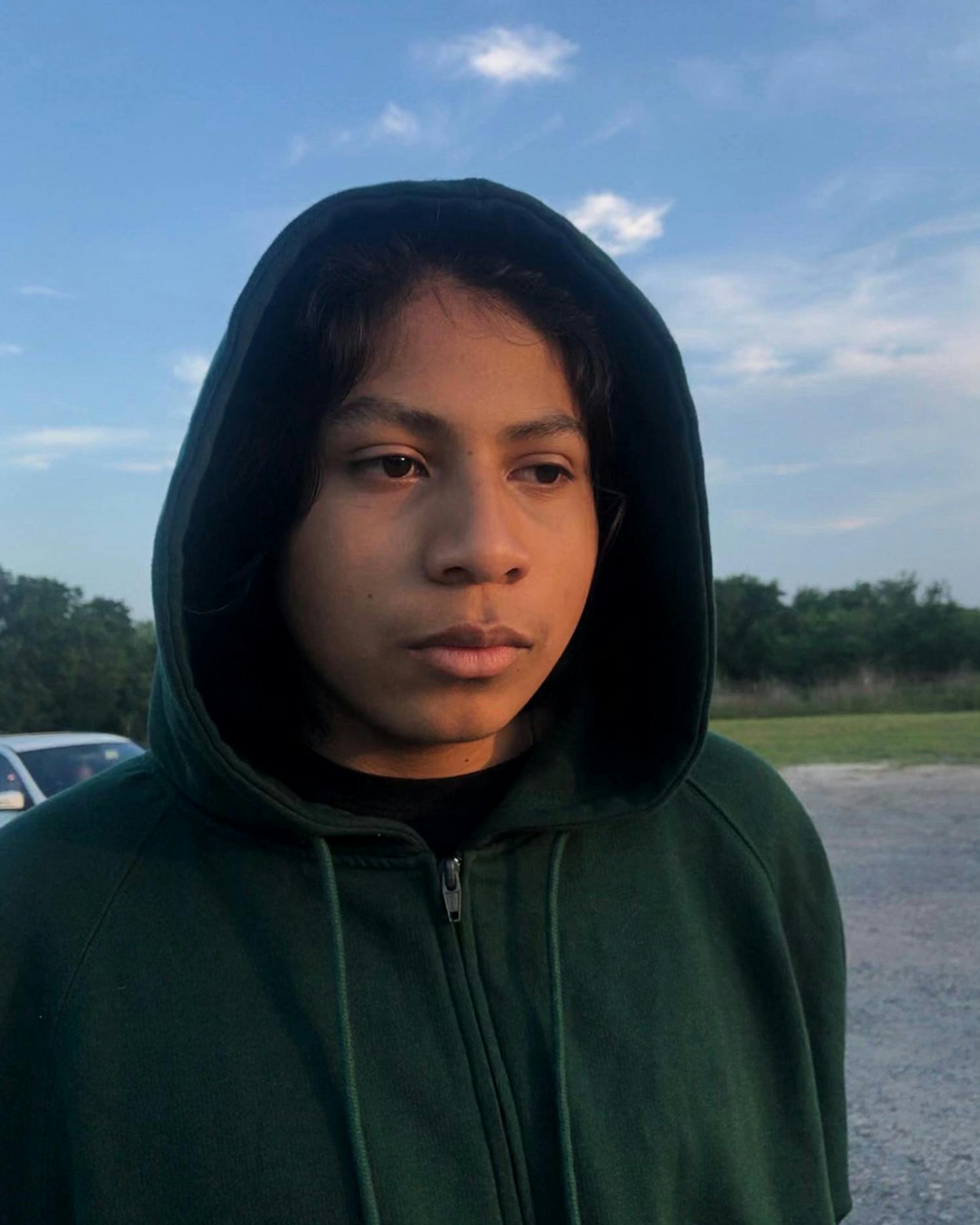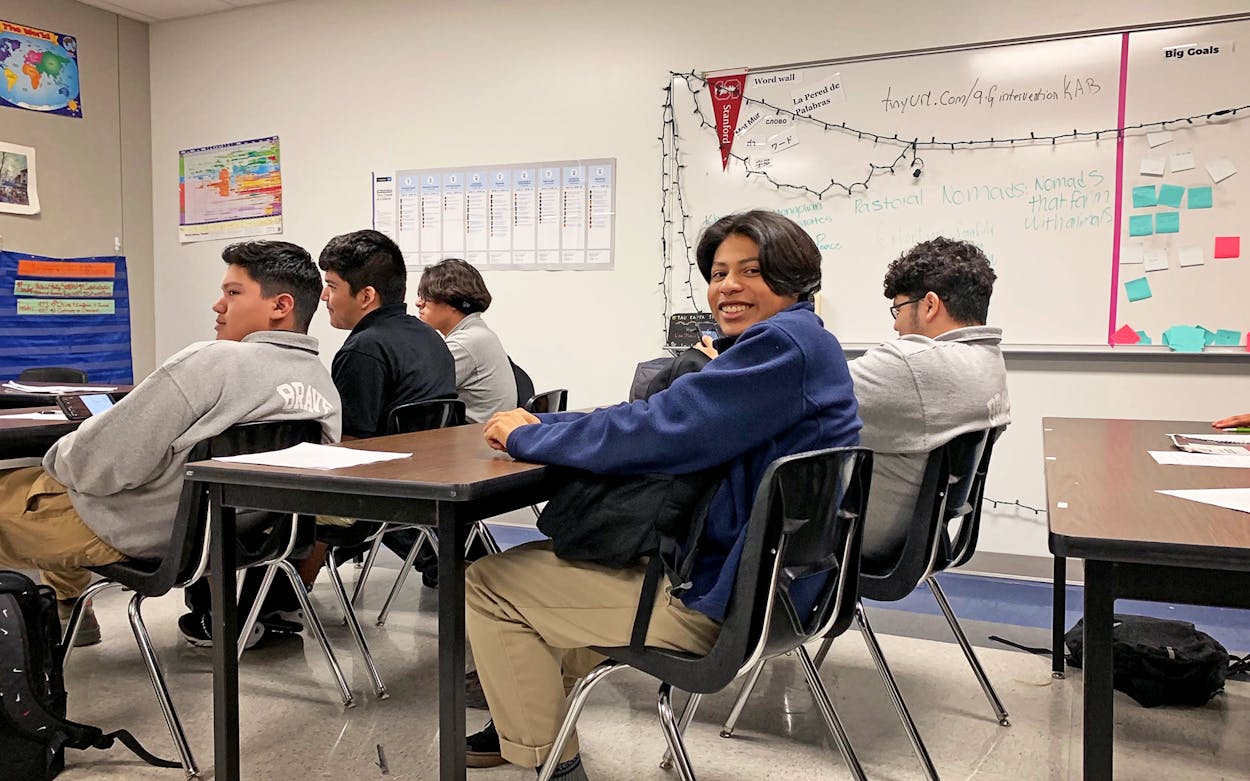When Levi Ayala left his house to go to work on Saturday morning, he didn’t plan on witnessing history. He had turned 16 four days earlier and was still excited about his new job at a Jersey Mike’s sandwich shop on Ben White Boulevard in South Austin. He’d been working there for only two weeks, but he was already saving money for his first car: an old-school BMW, one that he could work on. Levi had never actually opened up a car engine, but he was good with his hands, and he wanted to learn. “He picks things up quick,” says his older sister, Valerie, who is 25.
Levi has two other siblings—an older brother, Edwin, and a younger brother, Dimitri. The four, along with a pit bull named Bandit, live with their mother, Griselda, in Del Valle, just east of Austin. Levi’s family is close-knit, religiously devout, and serious about education. When the kids were younger, Griselda made sure they studied, and she frequently took them to the library. She enrolled all four at KIPP Austin Brave High School, a rigorous public charter school, where Levi excels at math and science. Lately, he’s become interested in socionics, the study of personality types influenced by the work of Carl Jung. He has a love for boxing and music, from DJ Screw to Pink Floyd.
That morning, Levi put on his work uniform: khaki trousers and a bright-blue Jersey Mike’s shirt. He grabbed his black backpack (in which he kept snacks and the restaurant menu, which he was still memorizing), and Griselda drove him to work at eleven. At around two that afternoon, Edwin sent Levi a text: “Get on Twitter I-35 crazy.” Edwin had just graduated from the University of Texas at Austin with a major in Mexican American and Latina/o studies and had spent much of his college years studying racism and gentrification. Levi isn’t as politically minded as his brother, though he and Edwin had been talking about the recent spate of killings by police. “We’re going through a transformation,” Edwin told Levi the previous day, “and Austin is at the epicenter.” Large demonstrations were planned that weekend to protest the police killings of Mike Ramos in Austin in April and George Floyd in Minneapolis on May 25. Society was changing, Edwin told Levi; young people weren’t going to sit around anymore and allow the police to get away with killing black and brown citizens.

As Edwin’s text suggested, I-35 was indeed crazy. Hundreds of protesters had shut down the freeway in both directions. Levi wanted to see history being made, so he took a bus north and got off at a downtown stop, then walked east toward the police headquarters, arriving around 4:30 p.m. The number of protesters had only grown over the afternoon, and hundreds stood in front of the headquarters, holding signs that read “Justice for George Floyd,” chanting, “Black lives matter,” and hurling invectives as well as rocks and water bottles at the numerous officers, all of whom stood by in riot gear, both in front of the building and on the freeway overpass above. The police were armed with batons, pepper spray, and modified shotguns that fire flexible baton rounds, small baggies filled with lead shot. Often called “beanbag” bullets, they are considered “less lethal” weapons, designed to stun but not penetrate the skin. However, along with other “less lethal” munitions like rubber bullets, they have a fatality rate of 3 percent (and 15 percent of those injured are left with permanent disabilities). Officers used these weapons throughout the afternoon, pepper-spraying or shooting at specific demonstrators—sometimes aiming and firing several times in a row. As the day wore on, dozens of people were hit in the legs, arms, and torso, where the rounds tore two-inch holes in their skin.
Levi wandered among the crowd. He wasn’t the only curious onlooker—many in the throng were Austinites drawn to watch the protest unfold. By this point the police had gotten southbound traffic on the highway moving again, and dozens of officers perched themselves on the side of I-35. Levi crossed under the highway overpass to the other side, where hundreds more protesters milled about, chanted, and threw projectiles. Soon, though, protesters began flooding onto the northbound highway, stopping traffic again. For a while Levi walked around the grassy median next to the highway, eventually making his way up to the edge of the freeway to observe the action.
But sometime after 5 p.m., the police started climbing over the concrete median toward the crowd, pushing them off the northbound freeway. (“We’ve always had a rule: we don’t allow people to overtake I-35,” police chief Brian Manley said later.) Protesters began running, and once officers got on the other side, they started firing multiple rounds of beanbag bullets from their shotguns, spurring even more people to flee—including Levi. Officers fired in bursts, and then there was quiet, followed by more firing as they advanced. “It was like a battlefield,” says Steve Arawn, who was working with the volunteer medical group Street Medics Austin. “It was insane.” Former EMT Andrew Dysert was also caught in the middle of the action. “They were shooting indiscriminately through the entire process,” he says, “over the entire hill.” Officers also used batons and pepper spray on protesters, some of whom stood with their hands in the air or pushed past them. After about a minute of intense fire, officers just took occasional potshots. And cars on the highway slowly started to roll again.
Levi ran until he got to the top of the hill overlooking the highway, about a hundred feet from the police. He stood in front of a billboard, his hands in his pants pockets. He now had a bird’s-eye view of the protest, as he watched the police shooting at the demonstrators below. Except for a woman walking rapidly up the hill behind him, there was no one else within thirty feet.
And then a police officer pointed his weapon in Levi’s direction and squeezed the trigger. A beanbag bullet flew through the air at three hundred feet per second, expanding as it did, and slammed into his forehead. In a short video later posted on Twitter, filmed from a condo across the freeway, you can see a line of officers, one of whom hunches over slightly and raises his right shoulder, as if aiming a weapon; next comes a pop, and Levi drops instantly, crumpling to the ground, while the cop stands erect.
Within moments, Levi, his forehead covered in blood, was surrounded by protesters. One of them pressed a bandage onto his wound, and a half-dozen people picked him up and carried him down the hill. A young man talked to him as they descended. “What’s your name?” he asked. “Do you know what day it is?” As they neared the bottom of the hill, the group confronted the police officers. “You killed him!” a woman shrieked. By the time they got to the sidewalk, several officers approached and took Levi while other officers pepper-sprayed the protesters who had delivered him. The cops carried Levi down the hill to an ambulance.

Two days later, chief Manley held a livestreamed Facebook press conference during which he talked about Levi’s shooting as well as another incident that had taken place the night before: a twenty-year-old African American man, Justin Howell, was also shot in the head with a beanbag round. (When Good Samaritans carried him to police for help, officers opened fire on them.) Manley said the department was investigating both cases, as well as a third incident, in which Saraneka “Nemo” Martin, a pregnant African American woman, was shot in the belly.
Manley stood by his department’s use of, as he called them, “less lethal beanbag” rounds. The chief insisted that the department had followed its own policy manual, which stipulates that officers must consider factors including whether the subject is armed or engaged in riotous behavior (such as throwing rocks or bottles), whether he poses a threat to officers, and how far away he is. Manley acknowledged that a video indicates that one of his officers “does appear to be [aiming] directly at” Levi. And he said he and members of his executive team were looking at making changes.
On Thursday, the Austin City Council, with Manley in attendance, held a virtual special session, in which three hundred citizens called in. Many berated the chief and shared stories of being pepper-sprayed and shot with beanbag bullets that day. But the climax of the evening came when it was Edwin’s turn. He was in tears immediately as he talked about his brother and how the bullet had stayed lodged in his forehead until he was finally taken into surgery that night. “We thought he was going to die,” Edwin said between sobs. “We cried all night.” Levi got out of surgery seven hours later, after doctors repaired his fractured skull, stopped the bleeding, and grafted skin onto the large entrance wound. But the bullet had damaged his prefrontal cortex, and Levi was having a hard time processing his emotions—and his pain. “He’s in so much pain, and I can’t help him,” Edwin sobbed. “He was so kind. He still is.”
Council members teared up as they listened to Edwin. After he was done, an indignant Greg Casar, the democratic socialist representative from District 4, asked Manley what he was going to do to prevent something like this happening in the future. Manley responded that beanbag bullets would no longer be used in crowd situations. That wasn’t good enough, said Casar, who had also seen the video of Levi being shot. “He was standing by himself, so changing the policy for crowds would not have changed this.”
By that point a GoFundMe campaign set up by Valerie, Levi’s sister, had raised more than $150,000 after the video of Levi being shot went viral. Both Valerie and Edwin have been searching the internet for other videos of the incident, trying to gather a definitive picture of what happened to their brother.
On Friday, Levi finally went home. Over the next few months he’ll see various therapists, both physical and emotional. Doctors won’t know for a while how the wound—a contusion to his prefrontal cortex—will affect his executive function and cognitive abilities. He is still in a lot of pain, including in his neck, where he has whiplash from the bullet hitting his head so hard.
Edwin sees a sliver of hope in the possibility that the trauma his brother suffered as a victim of police brutality at a protest over police brutality might actually prevent police brutality in the future. “I think if we can prevent this from happening to other people,” Edwin says, “I guess that is a silver lining. I mean, I didn’t even know you could survive this much pain, and my pain is nothing like what my mother is going through—and, of course, nothing like what Levi is going through. And my brother is the strongest guy I’ve ever known.”
- More About:
- Politics & Policy
- Police Violence
- Black Lives Matter
- Austin








